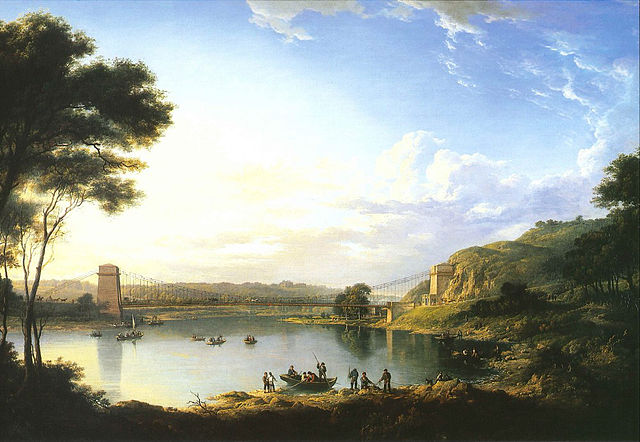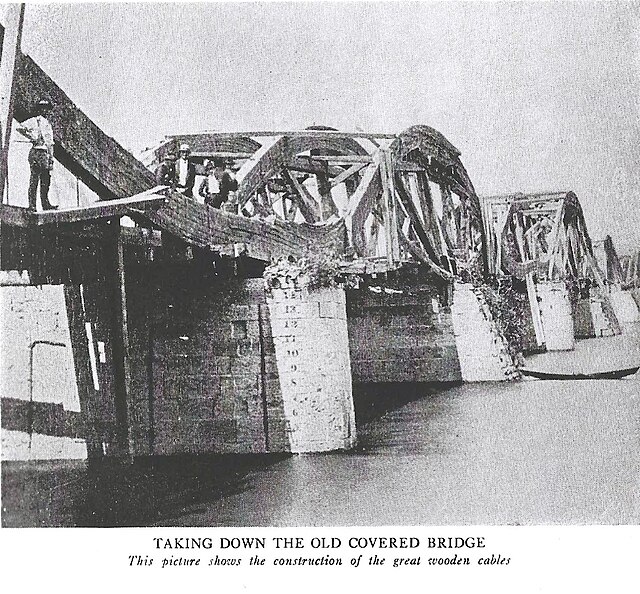The Union Chain Bridge or Union Bridge is a suspension bridge that spans the River Tweed between Horncliffe, Northumberland, England and Fishwick, Berwickshire, Scotland. It is four miles (6.4 km) upstream of Berwick-upon-Tweed. When it opened in 1820 it was the longest wrought iron suspension bridge in the world with a span of 449 feet (137 m), and the first vehicular bridge of its type in the United Kingdom. Although work started on the Menai Suspension Bridge first, the Union Bridge was completed first. The suspension bridge, which is a Category A listed building in Scotland, is now the oldest to be still carrying road traffic.
The bridge from the north on the Scottish bank
A painting of Union Chain Bridge by Alexander Nasmyth c. 1820
The sandstone pier on the Scottish side of the River Tweed
The bridge piers are adorned with an entwined rose and thistle coat of arms with the motto Vis Unita Fortior (Latin: "United, Strength is Yet Stronger")
A suspension bridge is a type of bridge in which the deck is hung below suspension cables on vertical suspenders. The first modern examples of this type of bridge were built in the early 1800s. Simple suspension bridges, which lack vertical suspenders, have a long history in many mountainous parts of the world.
The 1915 Çanakkale Bridge on the Dardanelles strait in Turkey, connecting Europe and Asia, is the longest suspension bridge in the world.
The double-decked George Washington Bridge, connecting New York City to Bergen County, New Jersey, is the world's busiest suspension bridge, carrying 106 million vehicles annually.
Chushul Chakzam, one of Thangtong Gyalpo's chain bridges, in 1904
The wooden 1808 Burr Suspension Bridge in Schenectady, NY, USA, during demolition in 1871, showing wooden cables. Spans of 160, 190, 180 and 157 feet on 3 piers began to sag, and 4 supporting piers were added in 1833 making 8 spans.








